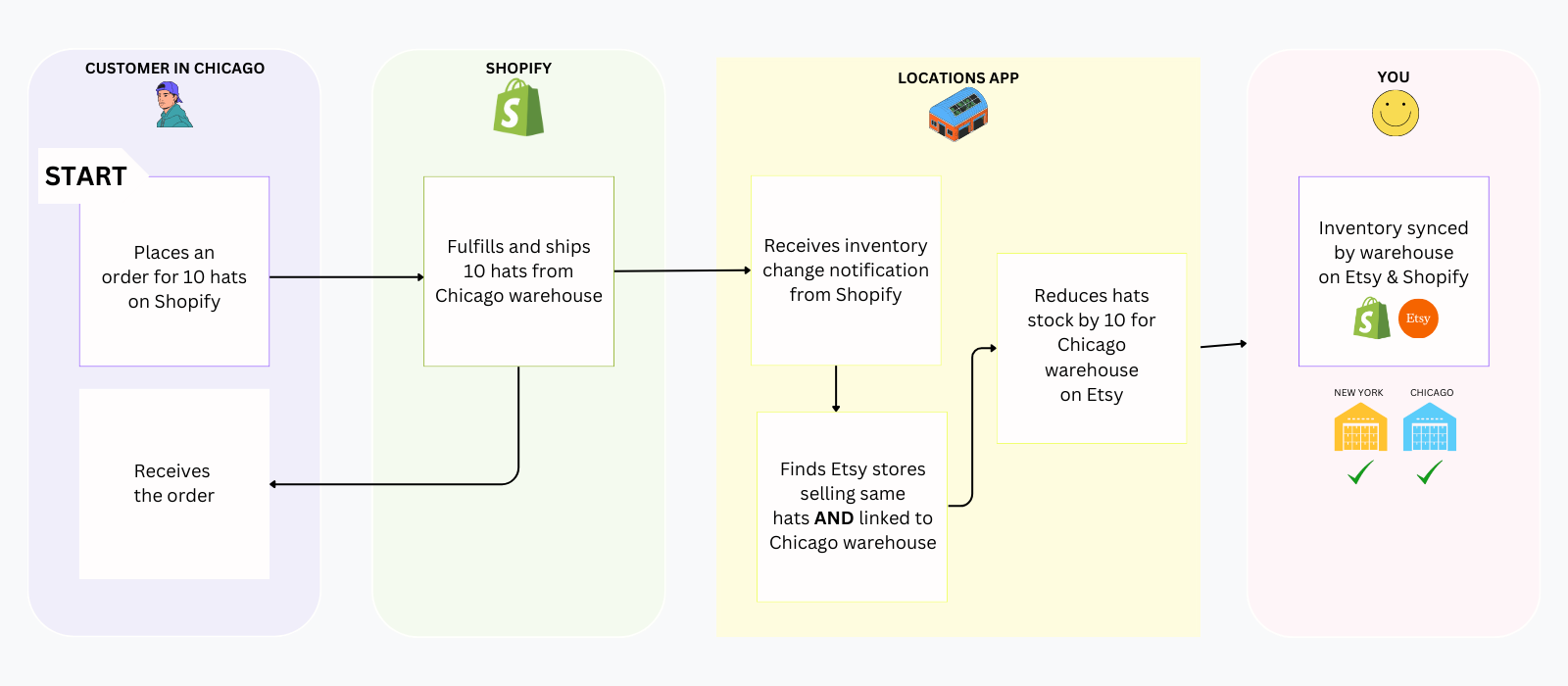Understanding Shopify's Inventory Management System (WIP)
That's huge income lost by businesses because inventory for items was out of stock. This is the main reason inventory management is crucial for e-commerce businesses - to prevent over-selling and under-selling products online.
Most online platforms like Shopify, provide a really good inventory management system but it can be found wanting, if you are selling the same product on multiple stores.
Let's start by understanding how Shopify's inventory management platform works. For this, let's look at the whole lifecycle of an order - related to an inventory item.
Lifecycle of a Shopify inventory item:
Imagine that you run a Shopify store with two warehouses - one in NY and one in LA. The NY warehouse stocks 5 hats and 1 shirt. The LA warehouse stocks 0 hats and 5 shirts.
| NY Warehouse | LA Warehouse | |
| Hats | 5 | 0 |
| Shirts | 1 | 5 |
If a customer visits your online store, and places an order for two hats , and two shirts - this is the flow that Shopify follows:
- An order routing process starts to find which location can fulfill this order. In this case - the router assigns the hats order to New York, and the two shirts order to LA.
- Shopify then decrements the available inventory quantity for hats in New York by 2, and decrements the available inventory quantity for shirts in LA by 2.
- At the same time, Shopify also increments the committed inventory quantity for hats in New York by 2, and increments the committed inventory quantity for shirts in LA by 2.
- Next, Shopify creates two fulfilment orders - one for the NY warehouse, and one for LA warehouse.
- Two fulfilment request are sent with the order details to both NY and LA warehouses.
- On receiving these requests, the NY and LA warehouses have the option to approve and complete their own fulfilment request by creating a fulfilment - e.g New York would create a fulfilment after picking and packing two hats - before the courier has collected the goods
- Both the warehouses can also add the tracking information along with each fulfilment.
- These fulfilments are then shipped to the customer independently through delivery carriers - one from New York, and one from LA.
- Lastly, Shopify decrements the committed inventory quantity for hats in New York by 2, and also decrements the committed inventory quantity for shirts in LA by 2.
- The customer then receives the order for two hats and two shirts from two different warehouses.
Drawbacks with Shopify's inventory management software
The problem with Shopify's inventory management software is that it runs well, IF you only sell on Shopify. Suppose, along with Shopify - you also sell your products on Etsy.
If you receive an order on Shopify and your New York warehouse fulfils it - you have to manually update these inventory changes to Etsy immediately to avoid over-selling products on Etsy that could have run out of stock. Or if you manually update your inventory on Etsy for your LA warehouse, you have to immediately also update the inventory on Shopify in the LA warehouse to prevent overselling on Shopify.
The problem is that both Shopify and Etsy (or Amazon, Ebay etc) do not talk to each other. Therefore you have to manually update inventories. This is a headache, as you have to worry about long spreadsheets and time-consuming manual tracking processes.

This is one of the main reason that stores look at inventory management to solve inventory issues. Apps that will help stores easily sync inventory between Etsy, Amazon, Ebay and Shopify - giving your more time to focus on growing your business.
References: